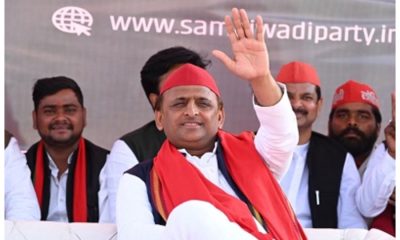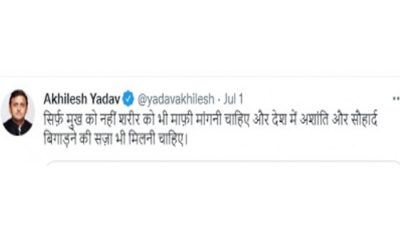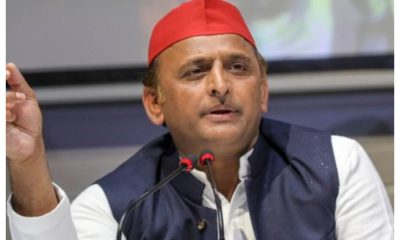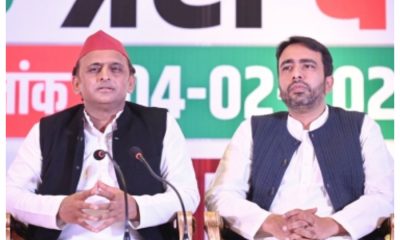National News
Akhilesh Yadav will leave state on March 10: UP BJP president
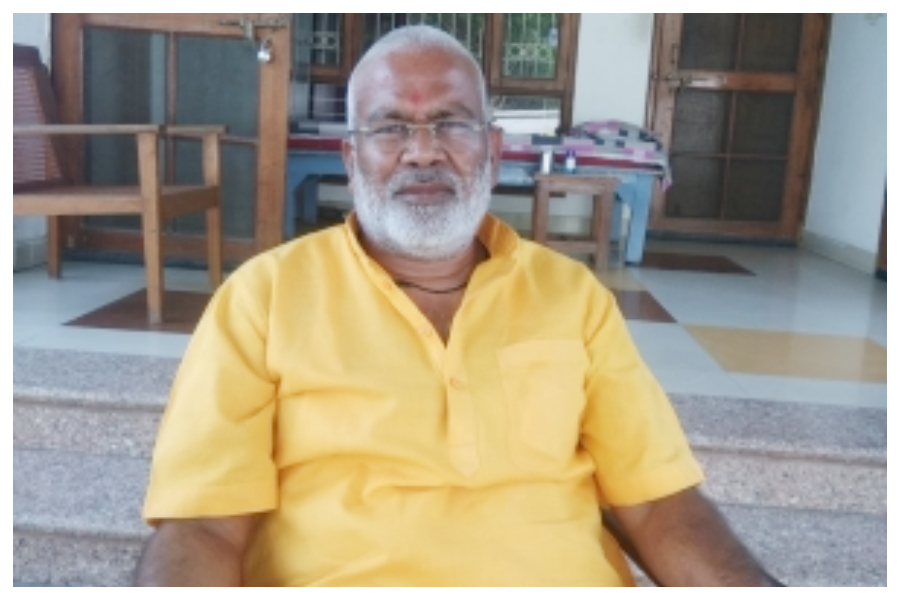
As Uttar Pradesh enters the final and the seventh phase of polling, State BJP President Swatantra Dev Singh said that after the poll results on March 10, Samajwadi Party (SP) chief Akhilesh Yadav will finally leave the state and will travel to London.
The State BJP President in an exclusive interview with IANS said, till the sixth phase of polling, the BJP will win more than 300 seats. Akhilesh Yadav, who claims to win 400 seats, will leave Uttar Pradesh on March 10 for London and close down his party office.
Asked about the SP Chief’s claims that the BJP will face defeat, Singh said, “Akhilesh Yadav’s comments should not be taken too seriously. He made such remarks in 2014, 2017 and in 2019 as well. Leaders like him have forged various alliances in the past and will lose their relevance during the current Assembly polls.”
The BJP is a disciplined party, he said, adding, “I recently met an electoral officer from Bengaluru, who said elections are taking place peacefully in Uttar Pradesh. Our party workers participate in elections by following all rules and regulations. There is no indiscipline in our party. Any individual can make any kind of claims against us? Our party workers focus on their work. They do not have any time for controversies.”
On the question of Sanghmitra Maurya, daughter of former Cabinet Minister Swami Prasad Maurya, campaigning against the party, Singh said, “She has not campaigned against our party. If and when the issue comes to our attention, we will take a decision on it.”
Singh further said, “The BJP talks only about development. But if there was an exodus of a particular community during the previous government, then it is our duty to inform the people about it. Whatever wrong doings the SP government had committed, people have a right to know about it. A party like the SP openly backs terrorists.”
On BJP asking for votes from Muslim women, Singh said, “Muslim women have become free from regressive practices such as Triple Talaq. They have been allotted houses under the Pradhan Mantri Awas Yojana and have full faith in the Narendra Modi government. Muslim women have benefited from various welfare schemes launched by the Centre and the state government. They will surely vote in large numbers for the BJP.”
On the question why BJP has not fielded a single Muslim candidate, the State BJP president said, “BJP is a worker-based party. It reviews the candidates who were allotted tickets in previous elections after which they are finally given tickets.”
Asked how will the BJP fight the caste-based alliances in Purvanchal, Swatantra Dev Singh said, “This time people are voting in the name of development and the rule of law.”
How do you see the SP, Congress and the BSP faring during this election, he added, “All three parties are fighting to remain relevant. They are no match to the BJP, which is again going to form the government in Uttar Pradesh with full majority.”
How will you see the BJP performing during the last six phases of elections, he said, “The BJP will win more than 300 seats of the six phases held so far. This time women are actively participating in the electoral process and are voting in favour of Narendra Modi and Chief Minister Yogi Adityanath. People will vote only for development. The BJP will again form the government with an absolute majority in the state.”
Asked about the five poll issues on which the BJP is contest elections, he said, “Law and order, housing for the poor, toilets, free ration and transparent governance. All the opposition parties only want to exploit the poor. In a global pandemic like Covid-19, the BJP government worked to serve the poor and the marginalised sections of the society. Parties like the SP and the BSP are nowhere. The welfare schemes of the government both by the Centre and the state have successfully reached every village and people have benefited from them. Basic facilities like electricity have considerably improved in the state.”
National News
Mumbai Local Train Update: Western Railway Services Disrupted Due To Trespassing Incident Near Mahim; Commuters Allege 30-40 Minutes Delay
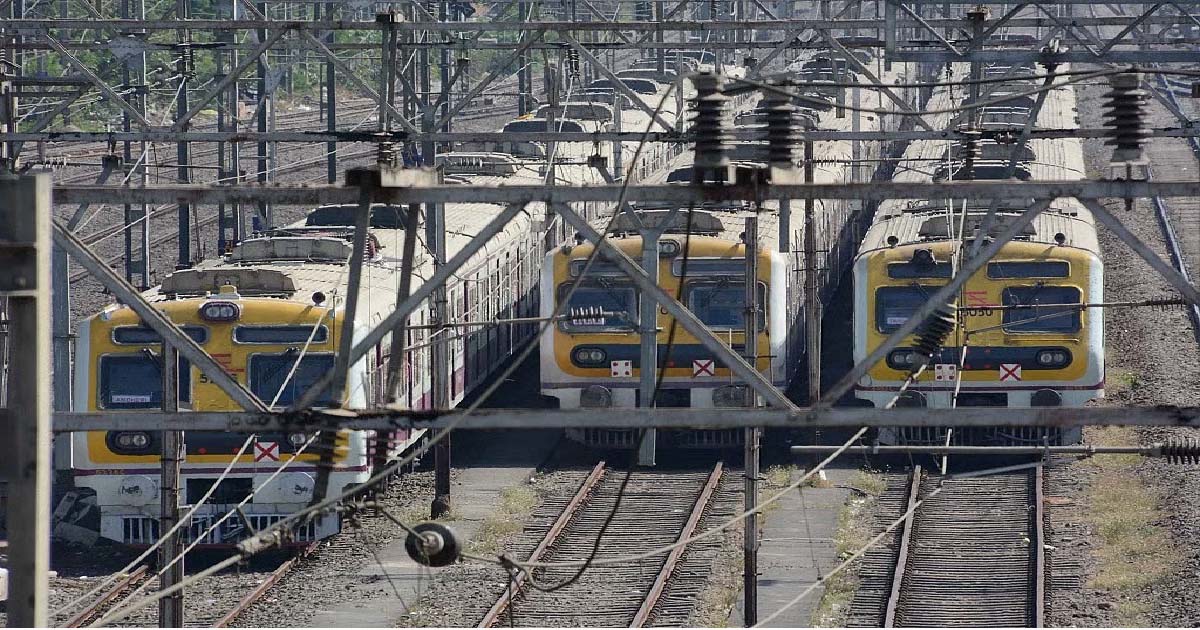
Mumbai: Suburban Train services on Western line were disrupted for nearly half an hour on Friday after a trespassing incident was reported near Mahim station around 10:35 am.
According to officials, the incident occurred on the Up fast line. Although the case was confined to a single track, its cascading effect slowed operations on adjoining lines as well. The affected train was detained for about 25 minutes, leading to several other services getting stranded along the route.
Railway personnel cleared the track by around 11:00 am, after which services on the Up fast line between Bandra and Mahim were gradually restored.
Western Railway reiterated that trespassing is a punishable offence under Section 147 of the Railways Act, 1989, attracting a fine of up to Rs 1,000, imprisonment of up to six months, or both. In most cases, a minimum fine of Rs 500 is imposed.
Officials have urged commuters to avoid trespassing under any circumstances and to use foot overbridges, lifts, and designated crossing facilities for their safety.
The incident comes just a few days after Maharashtra Chief Minister Devendra Fadnavis unveiled a major upgrade for Mumbai’s suburban railway network, announcing that new fully air-conditioned local trains with automatic doors will soon be introduced, without any increase in second-class ticket fares.
Speaking at the IIMUN Youth Connect event, Fadnavis said Mumbai’s local trains, which carry nearly 90 lakh passengers every day, remain the city’s lifeline. He acknowledged ongoing concerns around overcrowding and safety, stating that the upcoming fleet aims to provide a safer, more comfortable travel experience.
According to the Chief Minister, the railways will procure 268 new AC local trains that will gradually replace older, doorless rakes. The upgraded trains will resemble metro systems in design and functionality, with modern interiors and automated doors to minimise the risk of commuters falling from moving trains.
The announcement comes in the backdrop of heightened public concern after a fatal incident in Mumbra, where several passengers fell from an overcrowded non-AC coach. Fadnavis said the introduction of automatic doors is part of a broader push toward enhanced safety, adding that even new non-AC local trains are being designed with self-closing doors.
International News
India on high alert as Imran Khan rumours push Pakistan towards chaos: ISI eyes major diversionary strike
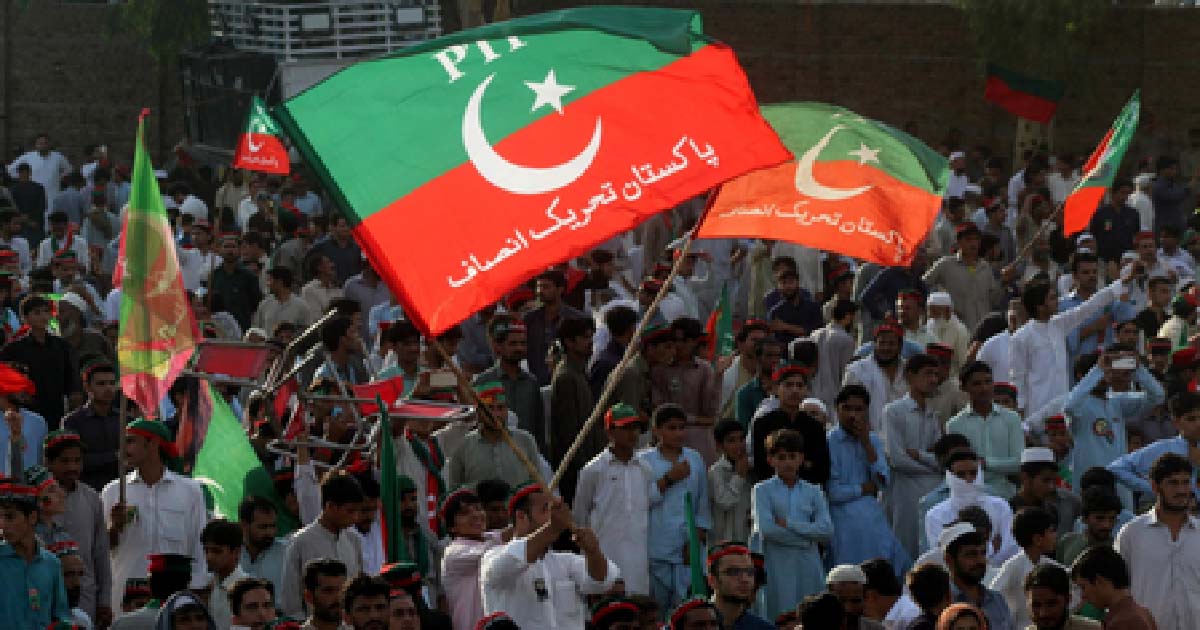
New Delhi, Nov 28: Indian Intelligence agencies have alerted the security forces to remain in a state of very high alert in the wake of the developments unfolding in Pakistan. Trouble is brewing in Pakistan in the wake of rumours relating to the death of former Prime Minister, Imran Khan.
Huge crowds are mobilising outside the Adiala Jail in Rawalpindi, where Khan is lodged. Thousands of PTI supporters have gathered outside the jail demanding that they meet with their leader.
The Pakistan Army, however has refused permission for a meeting with Khan, while also dismissing rumours about his death.
Intelligence Bureau officials say that rumours relating to the death of Khan began to circulate three days back. Since then there has been a massive build up of his supporters. If the Army does not provide proof that Khan’s supporters have been seeking, then violence is bound to engulf Pakistan.
An official said that violence is imminent in Pakistan given the current situation. For India, the spillover is the concern and trouble in the neighbourhood is never a good sign for national security.
An Intelligence Bureau official said that the ISI is already planning a series of major attacks in India, so that attention is diverted. Khan remains a very popular figure in Pakistan and if news about his death is true, then the country would witness violence of a very unprecedented nature.
It would be beyond the control of the security forces in Pakistan to control the people and eventually the country could face a civil war like situation. The Army wants to keep Imran Khan down and all issues relating to him under wraps.
However, it may not be able to sustain this for long as the people are getting anxious and are seeking answers. The ratings of the establishment in Pakistan, especially with Field Marshal Asim Munir at the helm has hit an all time low.
An official said that the people are being stopped by force and the Army does realise that a majority of the population wants the current dispensation out.
Pakistan watchers say that the people are particularly upset that the Army engineered a coup to take Khan out of power and install a dummy government under Shehbaz Sharif. There is no respect for a democratically-elected process and the people have being voicing their disgruntlement against this, experts add.
Indian officials say that the rumours relating to Khan’s death was something that the establishment did not expect. This has put the Army on the back foot. If one looks at the build up of supporters, it is massive and the Army would not be able to contain them by using force.
Officials say that the Pakistan Army would look to buy time so that it would be able to handle the situation. In order to buy time, the Army and ISI would plot attacks in India so that this would act as a diversion for sometime.
The chatter that has been picked up suggests a sense of urgency to carry out a spectacular strike in India. The ISI is not planning some small attack. It wants one on the scale of a Mumbai 26/11 or Pulwama so that the attention and focus of the Pakistan people is completely diverted, another official said.
Intelligence agencies have alerted security officials to keep a watch particularly on the eastern border. There is a lot of ISI related activity that is on in Bangladesh. Several modules have come up in collaboration between the Lashkar-e-Tayiba and Harkat-ul-Jihadi-Islami (HuJI) with the sole intention of carrying out attacks in India.
Pakistan is also planning to fly in Hafiz Saeed to Bangladesh so that he could give the members of this module a pep talks. Officials say that Saeed is always roped in to give the terrorists of his modules a pep talk just before a major attack is launched.
This was found to be the case prior to the Mumbai 26/11 attacks. Officials say that given the current situation in Pakistan, the ISI is desperate to create a diversion.
With the borders with Jammu and Kashmir and Punjab becoming harder to operate, the focus is on the modules of Bangladesh to carry out a major attack in India, officials add. Officials also add that such a diversion would give the Pakistan Army time to handle the situation relating to Imran Khan, which in turn would calm the people.
Crime
Land fraud case: J&K Crime Branch files chargesheet, two accused sent to judicial custody

Srinagar, Nov 28: The Economic Offences Wing of Jammu and Kashmir Crime Branch Kashmir said on Friday that it has filed a chargesheet against the accused in the court of law, as two accused have been sent to judicial custody.
A statement issued by the Crime Branch Kashmir said, “The Economic Offences Wing of Crime Branch Kashmir has produced a chargesheet before the Hon’ble Court of Special Judge Anti-Corruption, Anantnag, against Mushtaq Ahmad Bhat, son of Ali Mohammad Bhat, resident of Babapora Qazigund, Tehsil Devsar, District Kulgam, and Mohammad Yousuf Dar, resident of Khandipahari, Harnag, Anantnag.
“The case originated from a complaint alleging that Mushtaq Ahmad Bhat, then serving as Patwari Halqa Khandipahari Anantnag, entered into a criminal conspiracy with the complainant’s brothers to fraudulently mutate land falling under Khewat Nos. 05 and 07 at Khandipahari Harnag.
“This was done despite the land being under litigation and a status quo order issued by the Hon’ble Court, which was duly reflected in revenue records,” it said.
Investigations revealed that the Patwari concealed material facts, facilitated the sale of a portion of the disputed land and prepared fraudulent mutations.
Accused Mohammad Yousuf Dar was also found to have procured a fake and forged gift deed purportedly executed by his mother.
“The alleged witnesses to the deed denied any involvement. The complainant further stated that the Patwari demanded money for providing revenue extracts and that no departmental action was taken despite approaching senior revenue authorities,” it said.
Upon enquiry, the allegations were found prima facie substantiated, leading to the registration of FIR No. 45/2015 under sections 420, 468, 471, 120-B RPC, and 5(2) PC Act at Police Station Crime Branch Kashmir.
After a thorough investigation, the chargesheet has now been filed for judicial determination.
During the course of proceedings, the court has remanded the accused Mushtaq Ahmad Bhat and Mohammad Yousuf Dar to the judicial lock-up.
“The Economic Offences Wing of Crime Branch Kashmir remains committed to bringing fraudsters and economic offenders to justice and urges the public to remain vigilant against such fraudulent activities,” the statement added.
-

 Crime3 years ago
Crime3 years agoClass 10 student jumps to death in Jaipur
-

 Maharashtra1 year ago
Maharashtra1 year agoMumbai Local Train Update: Central Railway’s New Timetable Comes Into Effect; Check Full List Of Revised Timings & Stations
-

 Maharashtra1 year ago
Maharashtra1 year agoMumbai To Go Toll-Free Tonight! Maharashtra Govt Announces Complete Toll Waiver For Light Motor Vehicles At All 5 Entry Points Of City
-

 Maharashtra1 year ago
Maharashtra1 year agoFalse photo of Imtiaz Jaleel’s rally, exposing the fooling conspiracy
-

 National News1 year ago
National News1 year agoMinistry of Railways rolls out Special Drive 4.0 with focus on digitisation, cleanliness, inclusiveness and grievance redressal
-

 Maharashtra1 year ago
Maharashtra1 year agoMaharashtra Elections 2024: Mumbai Metro & BEST Services Extended Till Midnight On Voting Day
-

 National News1 year ago
National News1 year agoJ&K: 4 Jawans Killed, 28 Injured After Bus Carrying BSF Personnel For Poll Duty Falls Into Gorge In Budgam; Terrifying Visuals Surface
-

 Crime1 year ago
Crime1 year agoBaba Siddique Murder: Mumbai Police Unable To Get Lawrence Bishnoi Custody Due To Home Ministry Order, Says Report



